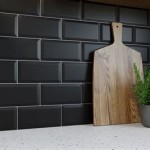Designing The Perfect Ceramic Tile Kitchen Floor Layout
Designing a kitchen floor using ceramic tile is a significant undertaking, requiring careful consideration of aesthetics, functionality, and durability. A well-planned layout not only enhances the visual appeal of the kitchen but also contributes to its practicality and longevity. Factors such as the size and shape of the kitchen, the existing cabinetry and appliances, the desired style, and the anticipated foot traffic all play crucial roles in determining the ideal ceramic tile floor layout.
Ceramic tile offers a wide range of design possibilities due to its diverse selection of sizes, shapes, colors, patterns, and textures. This versatility allows homeowners to create unique and personalized kitchen floors that reflect their individual tastes and complement the overall design of their homes. However, this abundance of options can also be overwhelming, making it essential to approach the design process methodically.
The initial step involves determining the overall design scheme for the kitchen. This includes selecting a color palette, identifying a specific style (e.g., modern, traditional, rustic, minimalist), and considering the existing architectural elements of the space. The choice of ceramic tile should align with these overarching design goals. For example, a modern kitchen might benefit from large-format rectangular tiles in neutral colors, while a traditional kitchen might incorporate smaller, more intricate tiles with decorative patterns.
Beyond aesthetics, practical considerations are paramount. The durability and slip resistance of the tile are particularly important in a kitchen environment, which is prone to spills and moisture. Ceramic tiles are generally durable and easy to clean, but specific types of finishes and textures offer enhanced slip resistance. It is also advisable to choose tiles that are resistant to staining and scratching, especially in high-traffic areas.
Key Point 1: Considerations for Kitchen Size and Shape
The size and shape of the kitchen significantly influence the optimal tile layout. In smaller kitchens, large tiles can create the illusion of spaciousness by minimizing grout lines. However, using extremely large tiles in a very small kitchen may result in excessive waste due to cutting. Conversely, in larger kitchens, smaller tiles can add visual interest and detail, but they may also make the space feel cluttered if not properly planned.
Irregularly shaped kitchens present unique challenges. Angled walls and awkward corners require careful planning to ensure that the tiles are installed in a visually appealing and structurally sound manner. It may be necessary to create custom tile cuts to accommodate these irregularities, minimizing waste and ensuring a professional finish. The layout should also consider the placement of cabinets and appliances, ensuring that the tiles flow seamlessly around these elements.
The direction in which the tiles are laid can also affect the perceived dimensions of the kitchen. Laying rectangular tiles lengthwise can make a narrow kitchen appear wider, while laying them widthwise can make it seem shorter and broader. Diagonal tile layouts can add visual interest and make a small space seem larger, but they require more precise cutting and installation, potentially increasing both the cost and complexity of the project.
Furthermore, the placement of grout lines can have a significant impact on the overall aesthetic. Grout lines should be consistent and even, and the color of the grout should complement the tile color. Lighter grout colors can make the tiles appear larger and brighter, while darker grout colors can create a more dramatic contrast and highlight the tile pattern. The width of the grout lines can also be adjusted to create different visual effects.
Key Point 2: Choosing Tile Patterns and Layouts
The choice of tile pattern is a crucial aspect of kitchen floor design. Numerous patterns are available, each offering a unique aesthetic appeal. Some common patterns include straight lay, brick lay, herringbone, checkerboard, and mosaic. The straight lay pattern, where tiles are aligned in parallel rows and columns, is a simple and classic option. The brick lay pattern, also known as a running bond, creates a staggered effect, mimicking the appearance of brickwork. This pattern is often used to add visual interest and a sense of movement to the floor.
The herringbone pattern, characterized by angled tiles arranged in a V-shape, is a more intricate and visually striking option. It adds a touch of elegance and sophistication to the kitchen. The checkerboard pattern, consisting of alternating squares of two different tile colors, is a classic and timeless choice. It can be used to create a bold and playful look or a more subtle and refined effect, depending on the colors chosen.
Mosaic patterns, which involve the use of small tiles arranged in intricate designs, offer endless possibilities for customization. Mosaic tiles can be used to create elaborate borders, geometric patterns, or even custom artwork on the kitchen floor. The layout should also consider the placement of focal points, such as islands or peninsulas. These areas can be emphasized by using a different tile pattern or color, or by creating a decorative border around them.
The scale of the pattern should be appropriate for the size of the kitchen. Large patterns can overwhelm a small kitchen, while small patterns may get lost in a large kitchen. It is also important to consider the existing design elements of the kitchen when choosing a tile pattern. The pattern should complement the cabinetry, countertops, and backsplash, creating a cohesive and harmonious look.
Key Point 3: Functionality and Traffic Flow Considerations
The functionality of the kitchen and the anticipated traffic flow are important factors to consider when designing the floor layout. High-traffic areas, such as the space in front of the sink and stove, should be tiled with durable and slip-resistant materials. These areas are more prone to spills and moisture, so it is important to choose tiles that can withstand heavy use and are easy to clean.
The layout should also optimize the flow of movement within the kitchen. The tile pattern and layout should guide people through the space in a natural and intuitive way. Avoid creating obstacles or bottlenecks that can hinder movement. Consider the placement of appliances and work areas when planning the layout. The tiles should flow seamlessly around these elements, creating a smooth and functional workspace.
Transition areas, such as the doorway between the kitchen and another room, should be carefully considered. Use transition strips to create a smooth and safe transition between different flooring materials. The transition strip should be flush with both flooring surfaces to prevent tripping hazards. The color and material of the transition strip should complement both flooring materials.
Accessibility is another important consideration, particularly for homeowners with mobility issues. The floor should be level and free of obstacles. Use grout that is non-slip and easy to clean. Consider the use of larger tiles to minimize grout lines, which can be a tripping hazard for some individuals. The layout should also ensure that there is ample maneuvering space around appliances and work areas.
The underlayment beneath the ceramic tile plays a significant role in its performance and longevity. A proper underlayment provides a stable and level surface for the tile, preventing cracking and shifting. It also helps to reduce noise and improve insulation. The type of underlayment required will depend on the subfloor and the type of ceramic tile being used. Consult with a flooring professional to determine the best underlayment for the specific application.
Finally, proper installation is crucial for the success of any ceramic tile kitchen floor layout. It is advisable to hire a qualified and experienced tile installer to ensure that the tiles are installed correctly. A professional installer will have the necessary tools and expertise to cut tiles accurately, create even grout lines, and ensure that the floor is level and stable. Improper installation can lead to a variety of problems, including cracked tiles, uneven grout lines, and water damage. Investing in professional installation will ensure that the ceramic tile kitchen floor looks beautiful and lasts for many years to come.

Top 5 Kitchen Layout Ideas And Tile Designs For Perfection

How To Choose Kitchen Floor Tiles In A Project Mir Mosaic

Improve Any Room With These Easy Ceramic Tile Ideas Why
:max_bytes(150000):strip_icc()/small-kitchen-ideas-mix-and-match-1021-99fbfaafe683423aa2af7d711d334e44-62f953ad7d5f4788995ecc3d72732509.jpeg?strip=all)
24 Beautiful Kitchen Floor Tile Ideas
:max_bytes(150000):strip_icc()/small-kitchen-ideas-sophia-at-home-ce212a5ab80e4c53b6f8dccc9ae70b59-5ca6f96cd0cb40959d368be4c3708094.jpeg?strip=all)
30 Gorgeous Kitchen Floor Tile Ideas

Tile Kitchen Floors Flooring For Kitchens

The Complete Guide To Kitchen Floor Tile Why

Kitchen Floor Tile Ideas 2025 Marble Systems

Top 10 Kitchen Floor Tiles Trends 2024 Stone Tile Depot

Kitchen Floor Ideas A Farmhouse Reborn
Related Posts








